Japanese beetles were discovered in the USA a century ago and their name is not in vain as they were brought all the way from Japan to New Jersey and spread quickly to the East. Today it is a well-known pest. Adult beetles consume leaves and fruits of hundreds of various trees, shrubs, vegetable and field crops, leaving only leaf skeletons and large holes. In summer, Japanese beetle females lay eggs from which larvae hatch and cause equally destructive harm. They feed on the roots of grass, corn, beans, tomatoes and strawberries, drying whole areas of lawns and killing small plants. Below, we will tell you how to get rid of Japanese beetles, which treatments exist and will list the top eight best killers ranging from 100% organic safe diatomaceous earth, nematodes, milky spores and pheromone trap to powerful insecticides for killing adults and larvae.
Identifying Japanese Beetles
The larvae of Japanese beetles can reach one inch in length and can be detected rolled in a C-shape underneath the upper layer of the soil. Their distinctive feature in terms of appearance is a characteristic V-shaped hair on their hind ends. If there are bronzed or dry grass areas on your lawn, they are a clear indicator of having these pests there. In this case, remove the upper soil layer and look for larvae matching the above description. Skunk and raccoon activity is yet another sign of soil contamination. These insects love to feast on larvae, so they find them and dig the soil there.
The soil requires treatment when more than five insects are found in an area of 8 x 8 inches. Because of damaged roots, grass and small plants do not get enough water and dry out, but well-irrigated soil can withstand more than seven or even ten larvae. The length of adult beetles does not exceed half an inch, their trunk is green, and the wings are bronze-colored. They can have a few white hair strands. Adult Japanese beetles emerge from soil in early July and their activity peaks for a maximum of two months, after which they gradually die one after another. During this time, one female lays up to 60 eggs, in other words, one beetle can produce a whole generation of larvae capable of ruining your lawn. She burrows underground to a depth of two inches and lays eggs there. Hatched larvae grow rapidly and reach their maximum size by the end of September. As soon as the air temperature drops below 60ºF, the larvae go deeper into the soil and rise upward in May.
In July, adult Japanese beetles can be found in vines, leaves of lime, birch, maple, cherry, raspberry, rose bush and other ornamental plants. They prefer to eat the outer side of leaves, especially those that are in the sun. Keep in mind that those Japanese beetles, which have already settled on your lawn, attract their kin there. This happens in two ways. First, the leaves damaged by these pests emit a specific smell that attracts additional insects. Second, adult beetles emit pheromone, which helps females and males find each other. And this, too, attracts new insects.
The Best Way to Get Rid Of Japanese Beetles
When deciding on insecticides, consider that adult Japanese beetles are capable of covering long distances in search of food. That is why if there are many beetles on the ground, it does not necessarily mean that the soil is infected with their larvae. Since getting rid of adult beetles and larvae implies various treatments, it is important not to confuse these two problems. Killing adult Japanese beetles is not an easy task as insecticides merely help to minimize the damage. At the same time, you will have to apply treatment every three-four days as new beetles who will feed on the leaves and lay more eggs in the soil can arrive, attracted by the pheromones.
There are various chemicals to be applied on the leaves. Quick elimination of the insects can be achieved with products containing carbaryl, acephate, pyrethrins, and pyrethroids. The latter include cyfluthrin, bifenthrin, deltamethrin, lambda cyhalothrin, esfenvalerate and permethrin. These substances should be applied from mid-August to the end of October or from mid-March to the end of May. After application, residual effects last for a fortnight, so several repeat uses are required.
Imidacloprid is applied on the soil around the plant and it kills the insect while it consumes leaves. Its main drawback is its restricted effect. If a Japanese beetle eats rose petals instead of shrub leaves, the chemical will be ineffective. Moreover, if you apply imidacloprid on a linden or any other tree where there are bees and other useful insects, damage can be done to them as well. The products containing imidacloprid, thiamethoxam or clothianidin as active ingredients have preventive action. They must be applied in the first two weeks of July to yield the best results. Another preventive control product, chlorantraniliprole, must be applied from May to early June.
6 Tips to Control Japanese Beetles
- If we are speaking about a small lot, physical removal of an insect can provide good results. Drop the beetles from the leaves into a jug of soapy water and you will get rid of not only these particular bugs, but also those that were supposed to fly to this place, attracted by the smell of pheromone. Small, but especially valuable plants can be protected with the help of row covers.
- Damaged and ill trees and plants, as well as prematurely ripe fruit, are especially attractive for Japanese beetles. Make sure you take care of such plants, remove overripe fruit from trees and the ground so that the beetles do not fly once they sense their smell.
- Install traps. You can do them yourself by installing a soapy water jug in the garden or buy one in a store. Japanese beetle traps are available with two baits: a flower attractant or a sex pheromone. Since these insects spend almost all their time looking either for food or for a partner, these baits work well. They have a grave disadvantage: pheromones attract beetles from other neighborhoods. For this reason, the experts from the University of Illinois Extension do not recommend using traps. Or, they say, you should at least keep them a quarter of a mile away from plants preferred by the beetles. Research shows that “If you do decide to use a trap, be prepared to change it very often. Commercial trap bags hold only about 4,000 beetles.”
- Neem oil can be an alternative to chemicals as it contains active ingredients that mimic the action of natural insect hormones. Real hormones are blocked, the beetle cannot eat and fly and it dies gradually regardless of the oil concentration as even a small dose is effective. It’s essential that the treatment does not act on useful insects. Don’t expect quick results; time must pass before you see any effect. Nevertheless, not all users agree. One of the gardeners commented: “I have just started to use neem oil for control of an invasion of Japanese beetles on my roses. I understand that it may take some time but it does not stop them from devouring the leaves in the meantime. I am disappointed.”
- Pour diatomaceous earth around the plants popular with the beetles. This natural insecticide will dehydrate the insects causing the beetles to die.
- Install bird feeders. Once they fly to your lot, they will find and kill beetles. Frogs are another effective insect hunters. They can be bought in an animal store and housed in your garden.
Ways to Get Rid Of Japanese Beetles’ Larvae
Larvicides must only be applied in case of high soil contamination. Once you make this decision, apply insecticides only from mid-July to the end of September. Regular insecticides, such as imidacloprid, merely kill larvae, while others, such as halofenozide and Acelepryn, keep useful insects in the soil. Vera Krischik and Doree Maser of the University of Minnesota Extension consider granules to be the best form of Japanese beetle insecticides.

Many insecticides are on sale, but their action varies and depends on which active ingredients they contain. Carbaryl solves the problem quickly, but it is highly toxic for bees and earthworms that are useful for your garden. Trichlorfon acts quickly and is used as an emergency measure if you discover damage in the middle of summer. Remember that this ingredient is more toxic and is banned for use on school grounds in some states. Products containing Imidacloprid are least toxic for humans, pets and fish, but they act preventively. They are to be applied from July to early September. Preventive measures imply using another substance, halofenzide. It imitates the insects’ hormonal action and is best used when beetles lay eggs. Chlorantraniliprole is a more environment-friendly chemical, popular among professional exterminators. Golf courses are treated with products containing chlorpyrifos.
If you don’t want to do harm to your soil with chemicals, opt for natural ingredients, the most popular of which are Bacillus popilliae (milky spore) and Heterorhabditis bacteriophora (nematodes). Milky spores are natural bacteria bred especially against Japanese beetles. They act by contaminating the larvae. It’s best to use this treatment if you have many larvae on your lot as the rate of infection will then intensify. The scientists evaluate the product’s effectiveness in different ways. For instance, Vera Krischik and Doree Maser, University of Minnesota Extension, claim that “In trials in Ohio, milky spore disease (Bacillus popillae) has not been as successful in killing Japanese beetles’ grubs as was reported in the 1960s.”
Nematodes Heterorhabditis bacteriophora are another treatment. They are worms hunting the larvae and contaminating them with bacteria that spread quickly in their victim. Products containing Steinnernema are sold, but studies show they are less effective and active than Heterorhabditis bacteriophora nematodes.
A Comparative Review of Methods How to Get Rid of Japanese Beetles and Larvae
Effectiveness Scale: 1 being the least, 10 being the most effective.
| Method/Killer | Stage | Advantages | Disadvantages |
| Diatomaceous Earth
Rating: 10 | Adult Japanese Beetle | Natural, absolutely safe for humans and pets (is edible), inexpensive and kills beetles. | The substance must remain dry. Even dew makes the dust lose its effectiveness. |
| Traps
Rating: 8 | Adult Japanese Beetle | Allows estimating beetle invasion scale, reduces beetle population quickly, and is safe for humans and environment. | New beetles are attracted by pheromone; regular removal of dead bugs is required. The problem is partly solved. |
| Curative Chemicals
Rating: 9 | Larvae (Carbaryl, Trichlorfon); Adult Japanese Beetle (Carbaryl, Cyfluthrin, Lambda-Cyhalothrin) | Quick elimination of larvae and adult beetles. | Is the least safe method, and trichlorfon is banned in certain states; carbaryl is toxic for useful insects and bees, trichlorfon and carbaryl kill at least 77% of larvae. |
| Preventive Chemicals
Rating: 10 | Larvae, Adult Japanese Beetle (Imidacloprid, Thiamethoxam, Clothianidin) | Least damage to soil and plants, long-term effect and almost complete larvae removal (thiamethoxam is 99.3% effective). Must be applied when you are unfamiliar with the soil contamination level, is useless against existing larvae. | Must be applied when you are unfamiliar with the soil contamination level, is useless against existing larvae. |
| Milky Spore
Rating: 10 | Larvae | Is safe and natural and safe, the results do not depend on weather. | Best results are not achieved immediately. |
| Parasitic Nematodes
Rating: 9 | Larvae | Is safe and natural, the results are yielded within a day, does not act on useful insects. | Cannot be used in cold or dry weather, is incompatible with chemical pesticides. |
| Neem Oil
Rating: 7 | Larvae, Adult Japanese Beetle | Is safe and natural, useful for earthworms, destroys future larvae generations. | Has a sharp unpleasant odor, the effect is visible over some time. |
| Birds And Frogs
Rating: 6 | Larvae, Adult Japanese Beetle | A natural treatment: birds and frogs find and kill insects independently. | Feeders and bird houses require building and maintenance, birds can also cause damage. |
TOP-8 Japanese Beetle Killers
Here, we’ve gathered the eight most effective killers ranging from 100% natural, diatomaceous earth, nematodes, milky spores and pheromone traps to powerful insecticides for killing adults and larvae. As usual, we will begin with organic and safe treatments.
Food Grade Diatomaceous Earth 10 lb. by Natures Wisdom (Two 5 lb. bags in a box)
This is a natural insecticide containing no impurities which dehydrates beetles by physically destroying the pests’ exoskeleton cause dehydration and death. It is sold in the form of a white powder and contains fossilized remains of diatoms. Diatomaceous Earth can be poured both on the ground and plants. Its distinctive feature from other treatments is its ultimate environment-friendliness.
It is completely safe for humans and pets and can be swallowed together with the food. Moreover, it can be added to dog or horse food as an effective parasite treatment. However, this substance can do harm to butterflies and bees. Remember to wear safety goggles and gloves when applying it. A variety of application methods exist for this dust: a dry method (through a flour sifter) or a wet one with a spray (mix four tablespoons of dust with a gallon of water in advance).
Price: Check the current price
Spectracide Bag-A-Bug Japanese Beetle Trap2 (56901)
This trap has been designed especially for Japanese beetles and is based on a natural sex attractant. It kills insects using their biological peculiarities. The manufacturer estimates that if you add a flower attractant, the trap will be able to attract twice or even five times as many Japanese beetles than if you use a flower attractant on its own.
Meanwhile the scientists warn that such devices can only worsen the problem, as beetles from other lots are also attracted and you really risk increasing the population of insects rather than reducing it.
However, users are satisfied with it’s efficacy. The baits can be re-used. We here at SPI have found that these traps work really well, but you may need to purchase extra bags as this trap works so well, the bags can fill up quickly.
Hang the trap outside. It covers up to 5,000 square feet. Spectracide Bag-A-Bug Japanese Beetle Trap2 use is restricted in certain states.
Price: Check the current price
How to Get Rid Of Japanese Beetles Naturally
Dr. Pye’s Scanmask 10 Million Live Beneficial Nematodes
Steinernema Feltiae nematodes are safe, environmentally friendly and compatible with the useful insects. The effect can only be observed after a few months and it is acceptable for natural treatments.
Nematodes are classified in different types. Research shows that Heterorhabditis bacteriophora are more effective due to their active behavior as they hunt larvae and follow their trail. Steinnernema glaseri or S. Carpocapsae are the worst as they tend to wait for their victim in an ambush. Moreover, the former nematodes descend deeper into the ground than the latter.
If you compare descriptions, you will see the difference in area covered: Steinernema nematodes cover 200 square feet while Heterorhabditis bacteriophora cover up to 3,000 square feet. A cut-rate price is another advantage of the latter type.
Dr. Pye’s Scanmask’s competitive edge is that these nematodes kill more insect species, namely up to 230.
Mix the nematodes with water and pour the mixture into a spray bottle before use.
Price: Dr. Pye’s: nematodes“>Check the current price
Price: Beneficial Nematodes Hb: Check the current price
ST GABRIEL ORGANICS 80080-2 Milky Spore Grub Control Mix Pest Controller
Milky Spore is the most expensive control product in this review, but it is good value for money. Just like nematodes, this is a natural and safe treatment that can be used in any weather or season, except for winter. The product has been especially designed to get rid of Japanese beetle larvae.
The treatment covers a much larger area than all of the previous products, 7,000 square feet. The manufacturer promises that the pests won’t return to the treated lot after use for 15 (!) years. Such prospects make the price justified.
Scientific research confirms this effect. Raymond A. Cloyd, University of Illinois Extension, observes that “In fact, studies have demonstrated that milky spore can last 15 to 20 years in the soil. It has been thought that milky spore may remain in the soil in a dormant but viable state until new infestations of grubs are present.”
The longevity and the effectiveness of this product speak for itself. It is organic but powerful, you should wear a mask during application so as not to breathe the powder. It will not kill off any beneficial bugs or worms, bees or birds, and is safe for the environment, children and pets (although it is recommended to keep children and pets away during application so they dont breathe in the dust). It does come with a higher price tag. Can you buy peace of mind? Debatable! But you will achieve good results in your lawn and garden.
Price: Check the current price
How to kill Japanese Beetles Fast with Powerful Insecticides
Japanese Beetle Spray With Carbaryl – Sevin Concentrate Bug Killer
It is perfect for large gardens as it kills over 100 insect species quickly on contact. The manufacturer distinguished Japanese beetles as a separate target. Its active ingredient, carbaryl, makes up for 22.5% of the total volume. Remember that this is a quite toxic substance that requires careful use. The positive side of this chemical is that it does not penetrate leaves’ tissue and it decomposes in the environment.
This insecticide works great on Japanese beetles, and kills other insects too, it’s safe to use in your garden but please read the manufacturer’s label for appropriate use and harvest times after an application.
The concentrate is to be mixed with water and sprayed on the surface of leaves, stems, branches, vegetables, flowers, fruits and decorative plants. Apply the product from the outside of the perimeter around the area where the beetles usually gather in large quantities.
Price: Check the current price
Japanese Beetle Spray with Imidacloprid Ortho MAX Tree and Shrub Insect Control Ready-to-Spray
This product contains the active ingredient imidacloprid and is usually used as a preventive measure for removing Japanese beetles. The manufacturer claims that Ortho MAX Tree and Shrub Insect Control ensures twelve months of plant protection, but one buyer claims that the product provides moderate results for only four months.
The spray is to be applied at the plant’s base, near its roots. Some inventive customers are even capable of reducing the negative impact of imidacloprid on bees by applying it with a paint brush rather than spraying it.
Price: Check the current price
Bonide 786 Eight Insect Control Garden Dust Pest Control, 3-Pounds
This product has gained 100% user approval. It comes in a ready to use powder, you simply dust your plants or any infested area. Make sure to cover the foliage well. One of the benefits of this product is there is no mixing or spraying. one treatment can last up to 4 weeks.
This long-action insecticide kills and repels 55 insect species, including Japanese beetles. Its active ingredient is 0.125% permethrin. It’s action lasts for a month. The dust is green and is to be used on vegetables, flowers and rose bushes. It can be applied on vegetables and plants all the way until harvest.
Price: Check the current price
Bayer Advanced 700740S 24 Hour Grub Killer Plus, Granules & Bayer Grub Control, Spray
These two Bayer larvicides are available as granules and a spray with different active ingredients. Granules cover up to 5,000 square feet and its active ingredient, trichlorfon, acts faster but it is more toxic than all the previous ones, which is a great drawback. Moreover, certain states restrict its use and it cannot be applied on edible plants and vegetables in gardens. It can be applied on flowers as long as you avoid leaves and petals.
This product is EPA registered to be safe for the environment, people and pets, so long as you follow the manufacturer’s recommendations on the label. According to the description, this product will help prevent lawn damage from Japanese beetles and this treatment also kills ants, scorpions and ticks.
The second product has an active ingredient 1.47% imidacloprid (Merit). It is sold as a spray. It is enough to treat the same area as covered by the previous product. The manufacturer promises that a single use will keep on killing larvae for the entire season. However, the product is less popular with the users than granules. The feedback varies, but satisfied users recommend using it twice (in fall and beginning of the summer) as a preventive measure.
Price: Bayer Granules Check the current price
Price: Bayer Spray Check the current price
TOP-8 best Japanese Killers Comparative Chart
Insecticide Use Rules
Irrigate the soil well before and after insecticide use to improve results. Do not use insecticides immediately before a downpour as it can reduce the substance’s concentration below effective level.
Always read the entire manual for each product as improper use can harm humans and pets as well as the environment. Do not throw waste spray mixtures or insecticides in the sewage. Use everything up in your own garden, according to the manual. Rinse the empty containers thoroughly and take them to a dump, or contact your local waste management facility, for the proper methods of disposal.
It is completely safe for humans and pets and can be swallowed together with the food. Moreover, it can be added to dog or horse food as an effective parasite treatment. However, this substance can do harm to butterflies and bees. Remember to wear safety goggles and gloves when applying it. A variety of application methods exist for this dust: a dry method (through a flour sifter) or a wet one with a spray (mix four tablespoons of dust with a gallon of water in advance).
Price: Check the current price
Spectracide Bag-A-Bug Japanese Beetle Trap2 (56901)
This trap has been designed especially for Japanese beetles and is based on a natural sex attractant. It kills insects using their biological peculiarities. The manufacturer estimates that if you add a flower attractant, the trap will be able to attract twice or even five times as many Japanese beetles than if you use a flower attractant on its own.
Meanwhile the scientists warn that such devices can only worsen the problem, as beetles from other lots are also attracted and you really risk increasing the population of insects rather than reducing it.
Hang the trap outside. It covers up to 5,000 square feet. Spectracide Bag-A-Bug Japanese Beetle Trap2 use is restricted in certain states.
Price: Check the current price
How to Get Rid Of Japanese Beetles Naturally
Dr. Pye’s Scanmask 10 Million Live Beneficial Nematodes
Steinernema Feltiae nematodes are safe, environmentally friendly and compatible with the useful insects. The effect can only be observed after a few months and it is acceptable for natural treatments.
Nematodes are classified in different types. Research shows that Heterorhabditis bacteriophora are more effective due to their active behavior as they hunt larvae and follow their trail. Steinnernema glaseri or S. Carpocapsae are the worst as they tend to wait for their victim in an ambush. Moreover, the former nematodes descend deeper into the ground than the latter.
If you compare descriptions, you will see the difference in area covered: Steinernema nematodes cover 200 square feet while Heterorhabditis bacteriophora cover up to 3,000 square feet. A cut-rate price is another advantage of the latter type.
Dr. Pye’s Scanmask’s competitive edge is that these nematodes kill more insect species, namely up to 230. users’ ratings also favor the product as the users approve of this treatment.
Mix the nematodes with water and pour the mixture into a spray bottle before use.
Price: Dr. Pye’s: nematodes“>Check the current price
Price: Beneficial Nematodes Hb: Check the current price
ST GABRIEL ORGANICS 80080-2 Milky Spore Grub Control Mix Pest Controller
Milky Spore is the most expensive control product in this review, but it is good value for money. Just like nematodes, this is a natural and safe treatment that can be used in any weather or season, except for winter. The product has been especially designed to get rid of Japanese beetle larvae.
The treatment covers a much larger area than all of the previous products, 7,000 square feet. The manufacturer promises that the pests won’t return to the treated lot after use for 15 (!) years. Such prospects make the price justified.
Scientific research confirms this effect. Raymond A. Cloyd, University of Illinois Extension, University of Illinois Extension, observes that “In fact, studies have demonstrated that milky spore can last 15 to 20 years in the soil. It has been thought that milky spore may remain in the soil in a dormant but viable state until new infestations of grubs are present.”
Price: Check the current price
How to kill Japanese Beetles Fast with Powerful Insecticides
Japanese Beetle Spray With Carbaryl – Sevin Concentrate Bug Killer
It is perfect for large gardens as it kills over 100 insect species quickly on contact. The manufacturer distinguished Japanese beetles as a separate target. Its active ingredient, carbaryl, makes up for 22.5% of the total volume. Remember that this is a quite toxic substance that requires careful use. The positive side of this chemical is that it does not penetrate leaves’ tissue and it decomposes in the environment.
The concentrate is to be mixed with water and sprayed on the surface of leaves, stems, branches, vegetables, flowers, fruits and decorative plants. Apply the product from the outside of the perimeter around the area where the beetles usually gather in large quantities.
Price: Check the current price
Japanese Beetle Spray with Imidacloprid Ortho MAX Tree and Shrub Insect Control Ready-to-Spray
This product contains the active ingredient imidacloprid and is usually used as a preventive measure for removing Japanese beetles. The manufacturer claims that Ortho MAX Tree and Shrub Insect Control ensures twelve months of plant protection, but one buyer claims that the product provides moderate results for only four months.
The spray is to be applied at the plant’s base, near its roots. Some inventive customers are even capable of reducing the negative impact of imidacloprid on bees by applying it with a paint brush rather than spraying it.
Price: Check the current price
Bonide 786 Eight Insect Control Garden Dust Pest Control, 3-Pounds
This product has gained 100% user approval. Here is an experience of one of the users after using Bonide 786
This long-action insecticide kills and repels 55 insect species, including Japanese beetles. Its active ingredient is 0.125% permethrin. Its action lasts for a month. The dust is green and is to be used on vegetables, flowers and rose bushes. It can be applied on vegetables and plants all the way until harvest.
Price: Check the current price
Bayer Advanced 700740S 24 Hour Grub Killer Plus, Granules & Bayer Grub Control, Spray
These two Bayer larvicides are available as granules and a spray with different active ingredients. Granules cover up to 5,000 square feet and its active ingredient, trichlorfon, acts faster but it is more toxic than all the previous ones, which is a great drawback. Moreover, certain states restrict its use and it cannot be applied on edible plants and vegetables in gardens. It can be applied on flowers as long as you avoid leaves and petals.

This is what you pay for an effective treatment. One of the users shared: “The 24-hour Bayer kills grubs and it is the best of the grub products.” The best time to treat your yard and lawn is the end of August or early September. According to the description, this treatment also kills ants, scorpions and ticks.
The second product has an active ingredient 1.47% imidacloprid (Merit). It is sold as a spray. It is enough to treat the same area as covered by the previous product. The manufacturer promises that a single use will keep on killing larvae for the entire season. However, the product is less popular with the users than granules. The feedback varies, but satisfied users recommend using it twice (in fall and beginning of the summer) as a preventive measure.
Price: Bayer Granules Check the current price
Price: Bayer Spray Check the current price
TOP-8 best Japanese Killers Comparative Chart
Insecticide Use Rules
Irrigate the soil well before and after insecticide use to improve results. Do not use insecticides immediately before a downpour as it can reduce the substance’s concentration below effective level.
Always read the entire manual for each product as improper use can harm humans and pets as well as the environment. Do not throw waste spray mixtures or insecticides in the sewage. Use everything up in your own garden, according to the manual. Rinse the empty containers thoroughly and take them to a dump, or contact your local waste management facility, for the proper methods of disposal.
Buy as much insecticide as you will use. How to calculate the necessary amount? Each product has its own recommendations, but some general rules of thumb apply. If you’re using a spray, you will need half a gallon of an insecticide for every 250 square feet. If you are using dust, you will need 4 oz (1/4 lb) of the product for the same area.

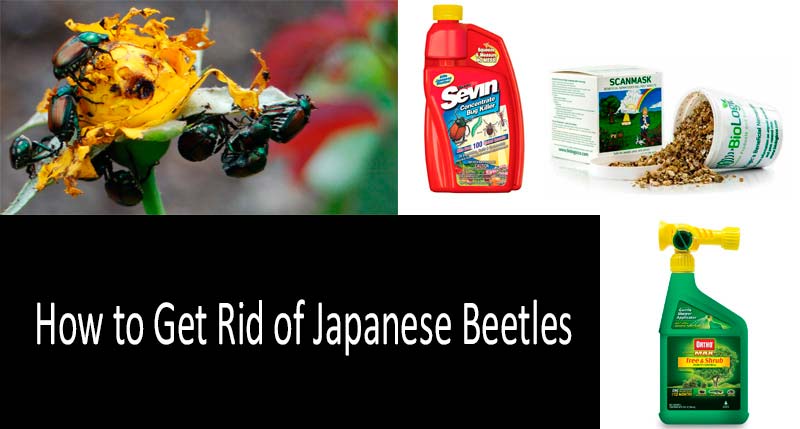





















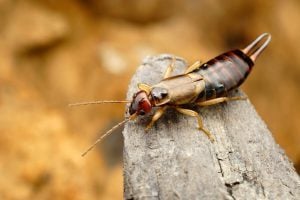
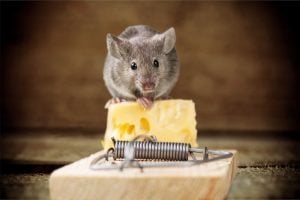
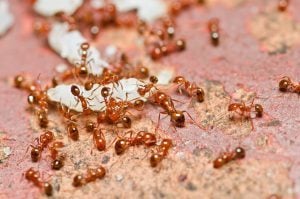
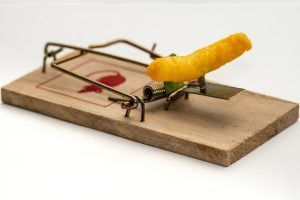
1 thought on “Japanese Beetles: How to Get Rid Of Adults and Larvae”
Me and my husband have spotted bed bugs in our bed and don’t know how to get rid of them…we never had them before so we don’t know what to do…please advise.